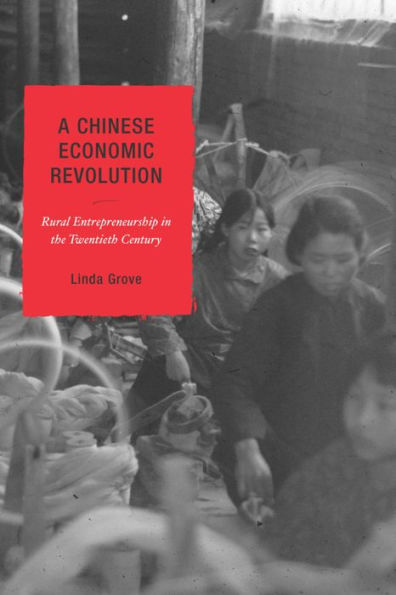This powerful and meticulously researched study explores the role of rural industry and entrepreneurship in the Chinese economic miracle. Linda Grove considers especially the development of the Gaoyang industrial district, China's best-known rural industrial district of the pre–World War II period. By focusing on one weaving district in North China, she is able to explore in detail the ways in which small industrial firms have accumulated capital, organized their firms, developed nationwide marketing networks, and promoted brands over the last century. Cutting across the conventional divide between studies of "history" and "contemporary economy" and between pre- and post-1949 China, the author persuasively shows the links between traditional Chinese business practices and contemporary entrepreneurial success.
The first book in English to explore the world of small-scale business firms in China, it introduces the activities of individual entrepreneurs and firms and examines the structure of industrial organization that has supported the rapid growth of individual firms. Based on several decades of archival research, surveys, and fieldwork, A Chinese Economic Revolution provides an in-depth exploration of Chinese rural industry. Framed by the author's extensive familiarity with rural industrial development in Japan, India, and Europe, the book also offers important comparative perspectives for those interested in global economic history, postsocialist economic performance, and economic development strategies.
"1124333802"
The first book in English to explore the world of small-scale business firms in China, it introduces the activities of individual entrepreneurs and firms and examines the structure of industrial organization that has supported the rapid growth of individual firms. Based on several decades of archival research, surveys, and fieldwork, A Chinese Economic Revolution provides an in-depth exploration of Chinese rural industry. Framed by the author's extensive familiarity with rural industrial development in Japan, India, and Europe, the book also offers important comparative perspectives for those interested in global economic history, postsocialist economic performance, and economic development strategies.
A Chinese Economic Revolution: Rural Entrepreneurship in the Twentieth Century
This powerful and meticulously researched study explores the role of rural industry and entrepreneurship in the Chinese economic miracle. Linda Grove considers especially the development of the Gaoyang industrial district, China's best-known rural industrial district of the pre–World War II period. By focusing on one weaving district in North China, she is able to explore in detail the ways in which small industrial firms have accumulated capital, organized their firms, developed nationwide marketing networks, and promoted brands over the last century. Cutting across the conventional divide between studies of "history" and "contemporary economy" and between pre- and post-1949 China, the author persuasively shows the links between traditional Chinese business practices and contemporary entrepreneurial success.
The first book in English to explore the world of small-scale business firms in China, it introduces the activities of individual entrepreneurs and firms and examines the structure of industrial organization that has supported the rapid growth of individual firms. Based on several decades of archival research, surveys, and fieldwork, A Chinese Economic Revolution provides an in-depth exploration of Chinese rural industry. Framed by the author's extensive familiarity with rural industrial development in Japan, India, and Europe, the book also offers important comparative perspectives for those interested in global economic history, postsocialist economic performance, and economic development strategies.
The first book in English to explore the world of small-scale business firms in China, it introduces the activities of individual entrepreneurs and firms and examines the structure of industrial organization that has supported the rapid growth of individual firms. Based on several decades of archival research, surveys, and fieldwork, A Chinese Economic Revolution provides an in-depth exploration of Chinese rural industry. Framed by the author's extensive familiarity with rural industrial development in Japan, India, and Europe, the book also offers important comparative perspectives for those interested in global economic history, postsocialist economic performance, and economic development strategies.
113.0
In Stock
5
1

A Chinese Economic Revolution: Rural Entrepreneurship in the Twentieth Century
320
A Chinese Economic Revolution: Rural Entrepreneurship in the Twentieth Century
320Related collections and offers
113.0
In Stock

Product Details
| ISBN-13: | 9780742573260 |
|---|---|
| Publisher: | Rowman & Littlefield Publishers, Inc. |
| Publication date: | 10/12/2006 |
| Series: | State & Society in East Asia |
| Sold by: | Barnes & Noble |
| Format: | eBook |
| Pages: | 320 |
| File size: | 3 MB |
About the Author
From the B&N Reads Blog
